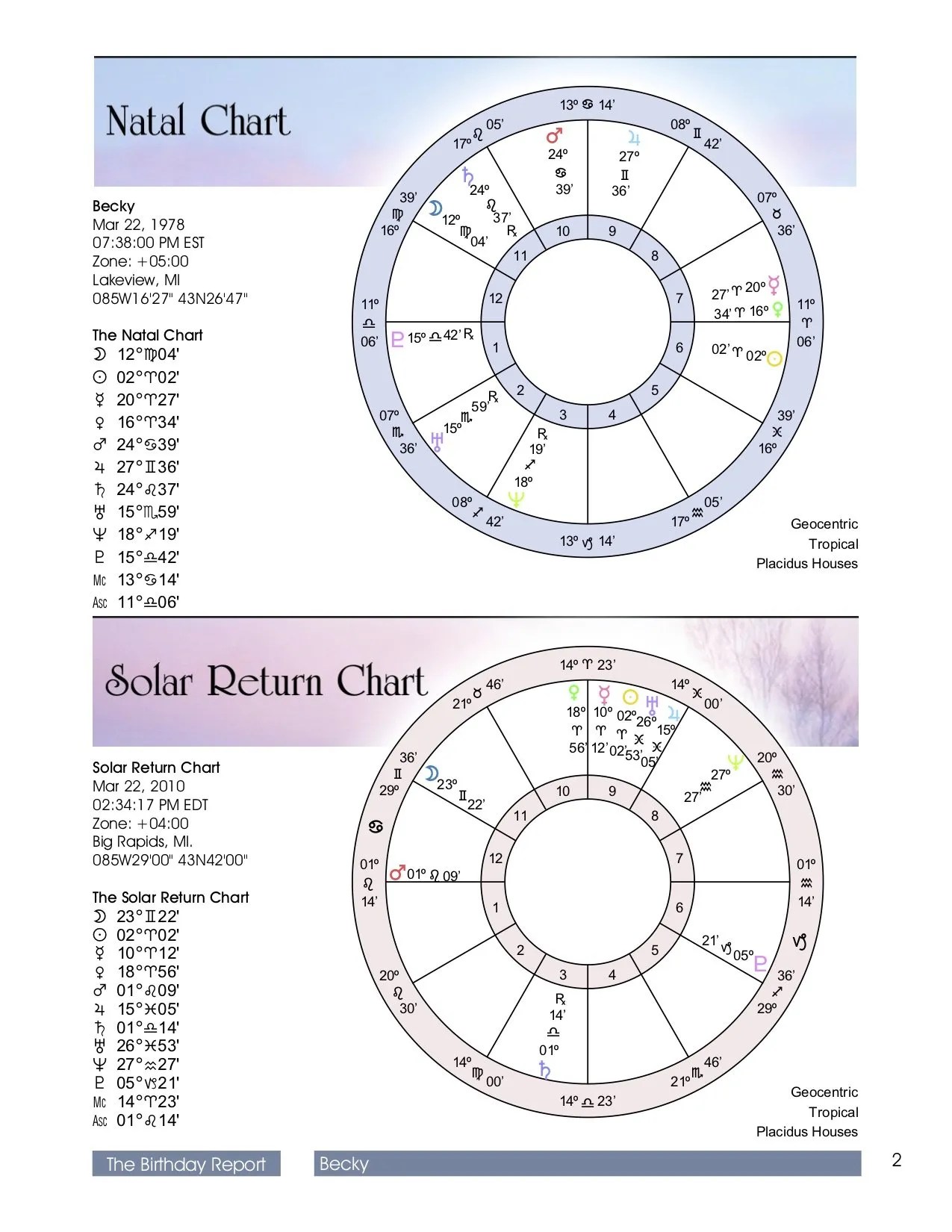Understanding how to read a natal chart is essential for anyone interested in astrology. A natal chart, also known as a birth chart, is a map of where the planets were located at the exact time of your birth. It provides insights into your personality, relationships, and life path. This guide will walk you through the fundamental aspects of a natal chart and how to interpret its various components, making astrology accessible to everyone.
Navigating the complexities of a natal chart can seem daunting at first. However, with the right tools and knowledge, you can uncover the rich tapestry of information woven into your astrological profile. Whether you are a beginner or someone looking to deepen your understanding, this article will equip you with the necessary skills to read and interpret your natal chart effectively.
In this comprehensive guide, you will learn the essential elements of a natal chart, including the significance of the zodiac signs, houses, planets, and aspects. We will also provide tips on how to apply this knowledge to gain deeper insights into yourself and those around you. So, let’s dive into the fascinating world of astrology!
Table of Contents
- What is a Natal Chart?
- Components of a Natal Chart
- How to Read a Natal Chart
- Interpreting Your Natal Chart
- Common Natal Chart Misconceptions
- Using Natal Charts for Personal Growth
- Getting Professional Natal Chart Readings
- Conclusion
What is a Natal Chart?
A natal chart is a personalized map of the sky at the moment of your birth. It captures the positions of celestial bodies, including the sun, moon, and planets, in relation to the twelve zodiac signs and the twelve houses. Each element of the natal chart contributes to your unique astrological profile, influencing various aspects of your personality and life experiences.
Components of a Natal Chart
To effectively read a natal chart, it’s essential to understand its key components: zodiac signs, houses, planets, and aspects. Each plays a distinct role in shaping the interpretations of your chart.
Zodiac Signs
The twelve zodiac signs are the foundation of astrology. Each sign has its unique characteristics and traits. Here’s a brief overview:
- Aries: Courageous and enthusiastic.
- Taurus: Practical and reliable.
- Gemini: Adaptable and communicative.
- Cancer: Nurturing and intuitive.
- Leo: Creative and charismatic.
- Virgo: Analytical and detail-oriented.
- Libra: Diplomatic and fair-minded.
- Scorpio: Passionate and resourceful.
- Sagittarius: Adventurous and optimistic.
- Capricorn: Ambitious and disciplined.
- Aquarius: Innovative and independent.
- Pisces: Compassionate and artistic.
Houses
The natal chart is divided into twelve houses, each representing different facets of life, such as relationships, career, and personal growth. The houses are numbered counterclockwise, starting from the Ascendant (the sign on the eastern horizon at birth). Here’s a brief description of each house:
- 1st House: Self and identity.
- 2nd House: Finances and possessions.
- 3rd House: Communication and learning.
- 4th House: Home and family.
- 5th House: Creativity and romance.
- 6th House: Work and health.
- 7th House: Partnerships and marriage.
- 8th House: Transformation and shared resources.
- 9th House: Philosophy and travel.
- 10th House: Career and public life.
- 11th House: Friendships and social causes.
- 12th House: Subconscious and spirituality.
Planets
Each planet in your natal chart represents different aspects of your personality and life experiences. The sun and moon are the most important, representing your core self and emotions, respectively. Other planets include:
- Mercury: Communication and intellect.
- Venus: Love and beauty.
- Mars: Action and desire.
- Jupiter: Growth and expansion.
- Saturn: Discipline and responsibility.
- Uranus: Innovation and change.
- Neptune: Dreams and intuition.
- Pluto: Transformation and power.
Aspects
Aspects refer to the angles formed between planets in your natal chart, influencing how they interact with each other. Key aspects include:
- Conjunction: Planets are close together, enhancing each other's effects.
- Sextile: A harmonious relationship between planets, promoting opportunities.
- Square: A challenging aspect that can lead to conflict and growth.
- Trine: A supportive aspect that brings ease and flow.
- Opposition: Planets are across from each other, indicating tension and balance.
How to Read a Natal Chart
Once you understand the components of a natal chart, you can begin interpreting it. Here are the steps to read a natal chart effectively:
- Step 1: Obtain your natal chart from a reliable astrology website or professional astrologer.
- Step 2: Identify your Ascendant sign, which sets the foundation for your chart.
- Step 3: Analyze the positions of the sun, moon, and planets in the zodiac signs and houses.
- Step 4: Examine the aspects between planets to understand their interactions.
- Step 5: Synthesize the information to create a holistic view of your astrological profile.
Interpreting Your Natal Chart
Interpreting a natal chart involves understanding how the various elements come together to shape your personality and experiences. Here are some tips for interpretation:
- Look for Patterns: Identify recurring themes in your chart, such as dominant elements or modalities.
- Balance Elements: Ensure you consider all components, including signs, houses, planets, and aspects.
- Contextualize: Relate your chart to your life experiences for a more personalized interpretation.
Common Natal Chart Misconceptions
There are several misconceptions about natal charts that can lead to confusion. Here are a few to clarify:
- Myth 1: Your sun sign is all that matters in astrology.
- Myth 2:
You Season 5: What Fans Can Expect From The Upcoming Installment
Understanding Ricky Martin's Age: A Journey Through Time And Music
Exploring The Life And Career Of Melanie Brown: A Comprehensive Guide

Understanding Astrocartography How To Use For Personal Growth

How To Read Natal Chart Astrology Images and Photos finder

How To Read Your Natal Chart Beginners Guide In 2020 Natal Charts Vrogue


